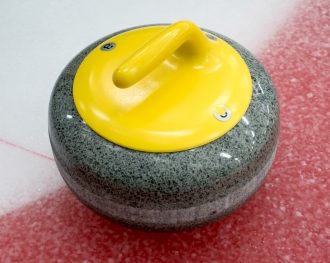 Losing the hammer. Blanking an end. Staying in the house. What on earth does it all mean?
Losing the hammer. Blanking an end. Staying in the house. What on earth does it all mean?
It can only be one thing… curling lingo.
If, like me, you’ve been enjoying watching the British curling teams in action at the Winter Olympics, you can’t fail to have noticed the weird terminology used in the sport.
So to ease your bewilderment as well as my own, I’ve put together this handy beginner’s guide to curling lingo. You’re welcome!
Key lingo used in curling
First, let’s demystify some of the most common terms you’ll hear.
Biter = a stone that just about touches the edge of the house
Blast = a shot delivered with heavy weight and at high speed, usually to remove several stones from play or to break up a cluster
Broom = the implement used to sweep the ice (brushes have almost completely replaced brooms, but the traditional name is still used)
Button = the centre (or bull’s-eye) of the house
Chip = a takeout that hits a stationary stone at an angle
Counter = each stone that lies closer to the centre of the house than any of the opposition’s scores 1 point at the completion of an end
Delivery = the process of throwing a stone
End = one of the 8 or 10 games that make up each match
Extra end = if the score is tied after the set number of ends, extras are played until the tie is broken
Gripper (or anti-slider) = rubber or other material attached to a curling shoe to improve traction on the ice
Guard = a stone that’s placed strategically as a blocker (the two main types are corner guards and centre guards)
Hack = the angled foothold device used by the thrower to push off for delivery
Hammer = the last stone in an end (representing a huge tactical advantage)
Hog line = the horizontal line by which the handle must be fully released
House = the target area comprising four concentric circles
Rub = when a moving stone skims another stone (less contact than a chip)
Sheet = the elongated playing rink with targets at both ends
Slider = Teflon or similar material attached to a curling shoe to enable sliding along the ice
Stone (or rock) = a heavy, highly polished granite orb with a bent handle on the top
Curling tactics
Depending on the desired outcome of each delivery, players will attempt one of several different throws. But with such a tiny margin for error, they don’t always succeed!
Blank an end = to intentionally leave no stones in the house in order to retain the hammer
Burn = to accidentally touch a moving stone
Draw = to deliver a shot that lands in play without removing another stone (as opposed to a takeout shot)
Flash = to completely miss an attempted takeout
Freeze = to deliver a stone so that it comes to rest against a stationary stone, making it almost impossible to remove
Hog = to fail to release a stone before crossing the hog line
Steal = to manage to score in an end without having the hammer
Sweep = to brush the ice vigorously in front of a moving stone to make it travel farther and curl less
Tap back = to nudge another stone towards the back of the house
Tick = to bump a guard out of the way without removing it from play
Bonus fact
Curling has several nicknames, the two most common ones being ‘Chess On Ice’ and ‘The Roaring Game’. Not surprisingly the former is due to the sport’s highly strategic nature. The latter, however, doesn’t relate to the shouts of the players to their teammates after the stone’s been thrown; it is in fact due to the sound a stone makes while sliding along the ice.
I don’t profess to be a curling expert – far from it – and this is by no means intended to be an exhaustive glossary of curling lingo. But hopefully it will serve to enhance your understanding of future matches. Rock on…
(image courtesy of Phil_Bird via FreeDigitalPhotos.net)
Have your say